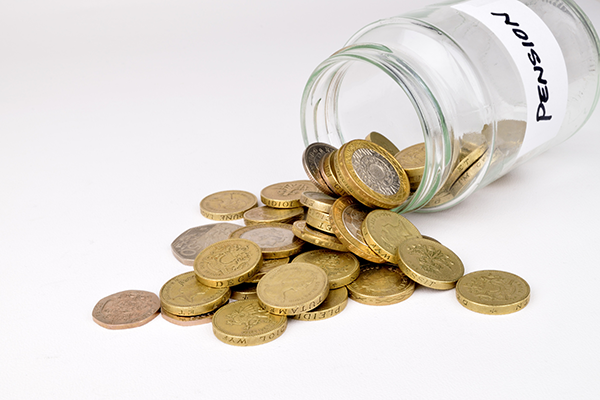Tips for the self-employed
Around 4,8 million people are self-employed in the UK. This is small in comparison to the 27 million people who are employed. If you are self-employed, you are one of the few people in the UK that have been greatly disadvantaged when it comes to pension planning, given the new pensions regulations. New pensions regulations require the all employers to offer auto-enrolled pension arrangements to all eligible employees. This is now compulsory. For self-employed people, no arrangements have been made within these new regulations.
Currently, close to 45% of self-employed people between the age of 35 and 55 have no private pension arrangement. Whilst you may be entitled to a State Pension, depending on your National Insurance Contribution record, this may not be adequate to cover the lifestyle you want in retirement. It is therefore really important that self-employed people take additional steps and extra caution in how they do their pension planning.
What kinds of pensions are available to self-employed people?

As we always say to our clients, it is never too late to start saving for retirement. What is most important is to start somewhere. There are three types of pensions that are available to invest in. These are private pension arrangements and each type allows for specific pros and cons.
(i) Ordinary personal pensions
These types of pensions are the most common among providers. As the name suggests, these pensions are personal arrangements in which you make monthly contributions, which are then invested by the pension provider to grow your investment. You do not need a financial adviser to open one, nor do you need to be employed to get access to these pensions. You just need to make sure that you keep up to date with your pension contributions. Normally with such pensions, the provider will have an already set mix of investments from which you can invest in. However, the allocations are managed by the pension provider
(ii) Self Invested Personal Pensions (SIPPs)
These are similar to ordinary personal pensions in that they are private and personal arrangements. However, these characteristically offer a wider range of investments than ordinary personal pensions. SIPPs also allow you to choose which investments you would like your pension contributions to be invested in. Essentially, you can build your own portfolio. However, this flexibility comes at a higher cost than that of ordinary personal pensions and it is normally reflected in administration and fund charges.
(iii) Stakeholder pensions
These are flexible pensions that allow you to contribute to your pension but with limits on the amount that you can be charged. Charges are limited to 1.5% per year for the first ten years of your membership with the pension and not more than 1% per year thereafter. In addition, the minimum contribution to such pensions cannot be more than £20, allowing you to contribute as little as £20 per month. Stakeholder pensions also have a feature known as lifestyling. This allows for the gradual shifting of your pension from higher risk investments to lower risk investments as you near your preferred retirement date. This is done to protect your pension as you get closer to needing it.
Within Impulse Plan, we encourage our clients to make use of our Personal Pension as it offers great flexibility in what you can invest your pension contributions in. With our Personal Pension, you are able to build your own portfolio and have the benefit of having a financial adviser guide you.
You get a little help from the government in building your personal pension pot
Depending on how much you earn per year, you are entitled to tax relief on your pension contributions, which essentially has the effect of increasing the value of your pension pot. This means that the government essentially tops up your pension pot as a reward for saving for retirement. Your rate of tax determines the level of tax relief.
Basic rate taxpayers
This tax band is for people who earn between £11,851 and £46,350 and these people pay tax at 20%. That is also the tax relief or “top-up’ they will get from the government on their pension contributions. Let’s look at an example below;
Susan’s Monthly goal | £100 |
|
Tax relief claimed by her pension provider | £20 | 20% * £100 |
Susan only has to contribute | £80 | 80% * £100 |
This means that if Susan continues to contribute this amount of £80 per month, she will have accumulated a pension valued at £1,200 when she only actually contributed £960. The difference (£240) is grossed up with the help of tax relief. | ||
Higher rate taxpayers
This tax band is for people who earn between £46,351 and £150,000 and these people pay tax at 40%. That is also the tax relief or “top-up’ they will get from the government on their pension contributions. Let’s look at an example below;
John’s Monthly goal | £100 |
|
Tax relief claimed by his pension provider | £20 | 20% * £100 |
Tax relief John can claim on his self assessment | £20 | 20% * £100 |
John only has to contribute | £60 | 60% * £100 or (£100 – £20- £20) |
This means that if John continues to contribute this amount of £60 per month, he would have accumulated a pension valued at £1,200 when he only actually contributed £720. The difference (£480) is grossed up with the help of tax relief. | ||
Additional rate taxpayers
This tax band is for people who earn over £150,000 and these people pay tax at 45%. That is also the tax relief or “top-up’ they will get from the government on their pension contributions. Let’s look at an example below;
Janet’s Monthly goal | £100 |
|
Tax relief claimed by her pension provider | £20 | 20% * £100 |
Tax relief Janet can claim on her self assessment | £25 | 25% * £100 |
Janet only has to contribute | £55 | 55% * £100 or (£100 – £20- £25) |
This means that if Janet continues to contribute this amount of £55 per month, she would have accumulated a pension valued at £1,200 when he only actually contributed £660. The difference (£540) is grossed up with the help of tax relief. | ||

Are there any limits to how much I can contribute to my pension?

There are limits to how much you can contribute with the benefit of the tax-relief option. You can contribute up to the lower of £40,000 and your annual earnings with tax relief per year.
You can contribute more if you would like to, but these will not be eligible for tax relief, but there is still a way to get this relief if you have not always been contributing up to the annual allowance of the three previous tax years. In reality, how this would work is that you would first have to use up your current year’s allowances and then first use the unused allowance from the earliest year, which in our case would be the 2015/2016 tax year.
If you haven’t contributed as much as the annual allowance in each of the previous three years, you can carry forward these allowances to the current tax year and be able to contribute more than the annual allowance and get tax relief on it. A tax year runs from the 6th of April each year to the 5th of April the following year.
Let’s say last year you contributed only £10,000 to your pension. That means that you have £30,000 of your allowance that you can carry forward to this year and you can contribute up to £70,000 this year and get your tax relief. You are pretty much getting an opportunity to catch up if you have not been making full use of your allowances in the previous three years! The allowances for the previous three tax years are as follows;
Tax year | Annual Allowance |
2015/2016: this is split into two periods;
1.Pre-alignment tax year: 6 April 2015 to 8 July 2015 2. Post-alignment tax year: 9 July 2015 to 5 April 2016 |
£80,000
£0
|
2016/2017 | £40,000
|
2017/2018 | £40,000
|
2018/2019 | £40,000
|
For the year 2015/2016, you can carry over up to £40,000 of your unused allowance from the pre-alignment tax year (6 April 2015 to 8 July 2015) to the post alignment tax year. That means that if you had contributed £10,000 in the pre-alignment tax year, you have £70,000 unused allowance that you can carry forward to the post-alignment tax year (between 9 July 2015 and 5 April 2016). What this means is that you have £70,000 to use in the post alignment year. Say, between 9 July 2015 and 5 April 2016 you contribute only £20,000 to your pension, you would have £50,000 left from the post alignment year to carry forward to the 2016/2017 tax year.
Contact us for a free consultation meeting to set up your personal pension.
